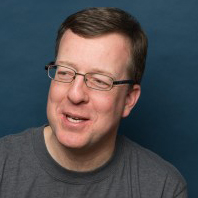Patrick Gabridge, playwright
A Kaleidoscopic Look at the Formation of American Identity through the Lens of Mount Auburn Cemetery
Playwright Patrick Gabridge (Blood on the Snow, Cato & Dolly), will touch on a group of historic topics about which he’s writing new short plays for performance at Mount Auburn Cemetery—all related to American history and identity.
The subjects include the formation of Mount Auburn Cemetery in 1831 and its important influence on cemeteries across the United States; Mount Auburn founders Jacob Bigelow and Joseph Story; Harriot Kezia Hunt, one of the first female physicians in the U.S. and Edmonia Lewis, the first black female American sculptor; Charlotte Cushman, famed actress of the 19th century, and Harriot Hosmer, a well-known sculptor and part of a community of independent women in Rome in the mid 1800s; and Armenian immigrants/refugees in the early 20th century. Patrick is the artist-in-residence at Mount Auburn Cemetery and has been actively wandering and researching the grounds and its residents for the past year.

Patrick Gabridge is Producing Artistic Director for Plays in Place (playsinplace.com), which works in partnership with museums, historic sites, and other cultural institutions to create exciting site-specific theatrical plays and presentations. In recent years, he’s returned to his site-specific explorations, writing Blood on the Snow for The Bostonian Society, which had sold out runs in 2016 and 2017, and Both/And, a play about quantum entanglement, for the Central Square Theater and the MIT Museum, which played at the MIT Museum in 2017 and 2018. Patrick wrote and produced Cato & Dolly for The Bostonian Society, which was part of their Through the Keyhole exhibit around unheard voices from American history and the door from the Hancock Mansion in 2018 and 2019. In addition, he was the artist-in-residence at the Mount Auburn Cemetery from 2018-2019, where he wrote and produced The America Plays and The Nature Plays, both produced by Plays in Place.
